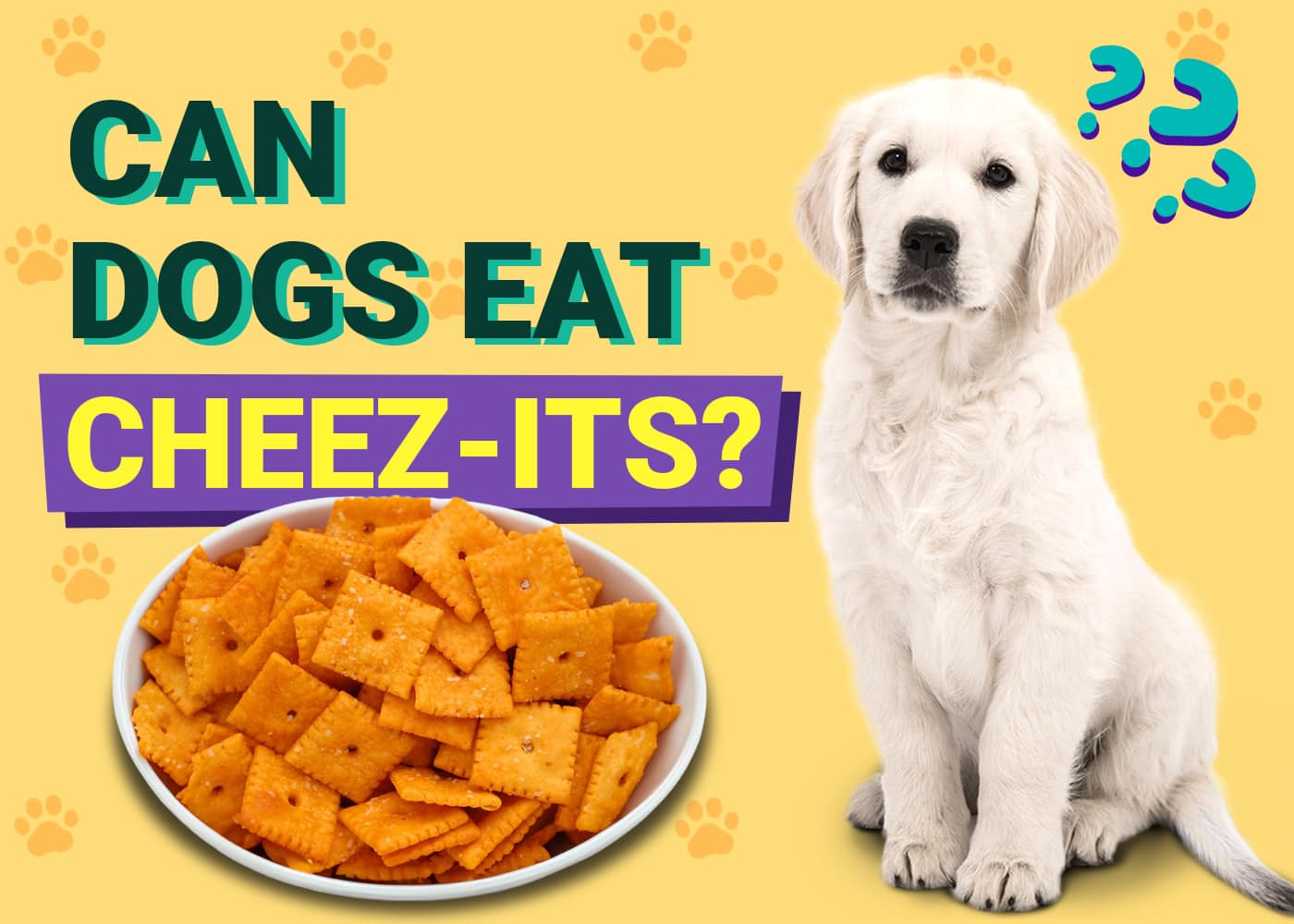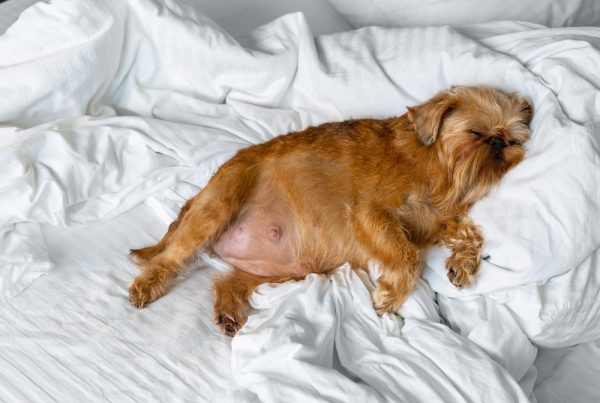In this article
Ever been mid-munch on a Cheez-It and suddenly felt the weight of those soulful puppy eyes? You are definitely not the first! It’s almost impossible not to melt under the adoring gaze of our four-legged friends, especially when we’re relishing something as delicious and crispy as these cheesy little squares.
In the heat of the moment, the idea of sharing a few with them seems pretty harmless. But wait! Is it safe to offer one to my begging buddy? While it is technically safe for a dog to eat a Cheez-It or two on rare occasions,they really aren’t the best snack for them. Before you grant your canine companion access to the Cheez-It party, we need to unravel the cheesy enigma hiding within those little crackers. Let’s delve into the cheesy unknown, shall we?

Unraveling The Cheez-Its Mystery: What’s Inside These Cheesy Squares?
- Enriched flour—a mixture of wheat flour, niacin, and iron, with a variety of vitamins like B1, B2, and folic acid.
- Vegetable oil, which is actually a blend of high oleic soybean oil, soybean oil, palm oil, and/or canola oil, all spiced up with TBHQ to keep it nice and fresh
- Cheese (the main attraction), made with skim milk, whey protein, salt, cheese cultures, and enzymes. There’s also a touch of annatto extract to give it that bright, attractive color we all know so well.
- Finally, there is salt, paprika, yeast, paprika extract for color, and soy lecithin. Each of these makes up 2% or less of the ingredients.
- 150 calories
- 8 grams of fat,
- 3 grams of protein
- 17 grams of carbohydrates
But the Cheez-It family doesn’t stop at the Original recipe; there’s a whole spectrum of other flavors like hot & spicy, buffalo wing, and extra cheesy, each with its own list of ingredients, some of which could be risky for dogs. Beware, for instance, of onion and garlic powders, as these are bad news for your pooch.

Why Cheez-Its Are Not The Best Snack Choice for Dogs
While Cheez-Its set our taste buds ablaze, they fall short of delivering the nutritional sustenance that dogs need. Dogs, being more inclined towards a carnivorous physiology, need diets rich in high-quality animal proteins and fats. Cheez-Its just don’t check these boxes (not even the buffalo wing flavor).
These cheesy squares pack quite a caloric punch. If your dog doesn’t get enough exercise to offset the intake of Cheez-Its, they could start to put on weight. Just like in humans, obesity will put your dog at risk of conditions that can seriously impact the quality and length of their life, like joint problems, cardiac disease, and spinal injury. So while a Cheez-It now and then might not do much harm, if it becomes a regular thing, you could be putting your dog’s health at risk, and that’s not what we want for our canine buddies, right?
What Happens if a Dog Eats Cheez-Its?
In most cases, if your dog manages to snatch a few Cheez-Its from your plate while your back is turned, there’s no need for panic. However, if they have managed to devour a whole packet, you should contact your vet urgently. They may recommend taking steps to reduce the gastrointestinal impact of such a large fatty meal.
When a dog eats something that is high in fat and ingredients that are not suited to them, it can put them at risk of life-threatening pancreatitis. So if your dog has gorged themselves on these cheesy snacks – keeping in mind that for a small dog, this could be a relatively small portion – call your vet.
Signs to be watching out for are lethargy, bloating, abdominal pain, inappetence, vomiting and diarrhea. If your dog shows any of these signs after dining on Cheez-Its, they need medical attention.
If you need to speak with a vet but can't get to one, head over to PangoVet. It's our online service where you can talk to a vet online and get the advice you need for your pet — all at an affordable price!
Healthy Snacking Alternatives for Dogs
Fruits and vegetables can make for delicious, healthy, and nutritious treats for your dog, and you would be surprised by what they might enjoy. Raw carrots are a huge favorite, providing a satisfying crunch that hits the spot and works the teeth. Onions, grapes, and avocados are a big no-no, as is corn on the cob or any fruits that have a stone (until you remove the stone, of course). Bear in mind that fruits are quite high in sugar, and should only be given as a treat.
What about their carnivorous cravings, you ask? Lean, unseasoned meats like chicken or turkey will surely win their hearts, but always cook them first.
There are all sorts of pre-prepared treats you can stock up on, or if you are wanting to unleash your inner Martha Stewart, there are many ideas for homemade dog treats out there, just waiting to be made and eaten.


Conclusion
Although it’s hard to resist those adorable eyes pleading for a bite of your beloved Cheez-Its, you’re better off keeping them to yourself, and offering your canine friend a more dog-friendly option. While the odd one or two crackers is unlikely to cause harm, the more they have, the worse the consequences will be.
Instead, let’s invest our energy in finding or creating treats that will not only tickle their taste buds but also promote good health. And if you are ever worried about what your dog has managed to eat behind your back, your vet is always the first person to call.
See Also:
- Can Dogs Eat Ritz Crackers? Vet Reviewed Facts & Safety Guide
- Can Dogs Eat Chicken Gizzards? Vet-Reviewed Facts & FAQ
Featured Image Credit: karen roach, Shutterstock



















